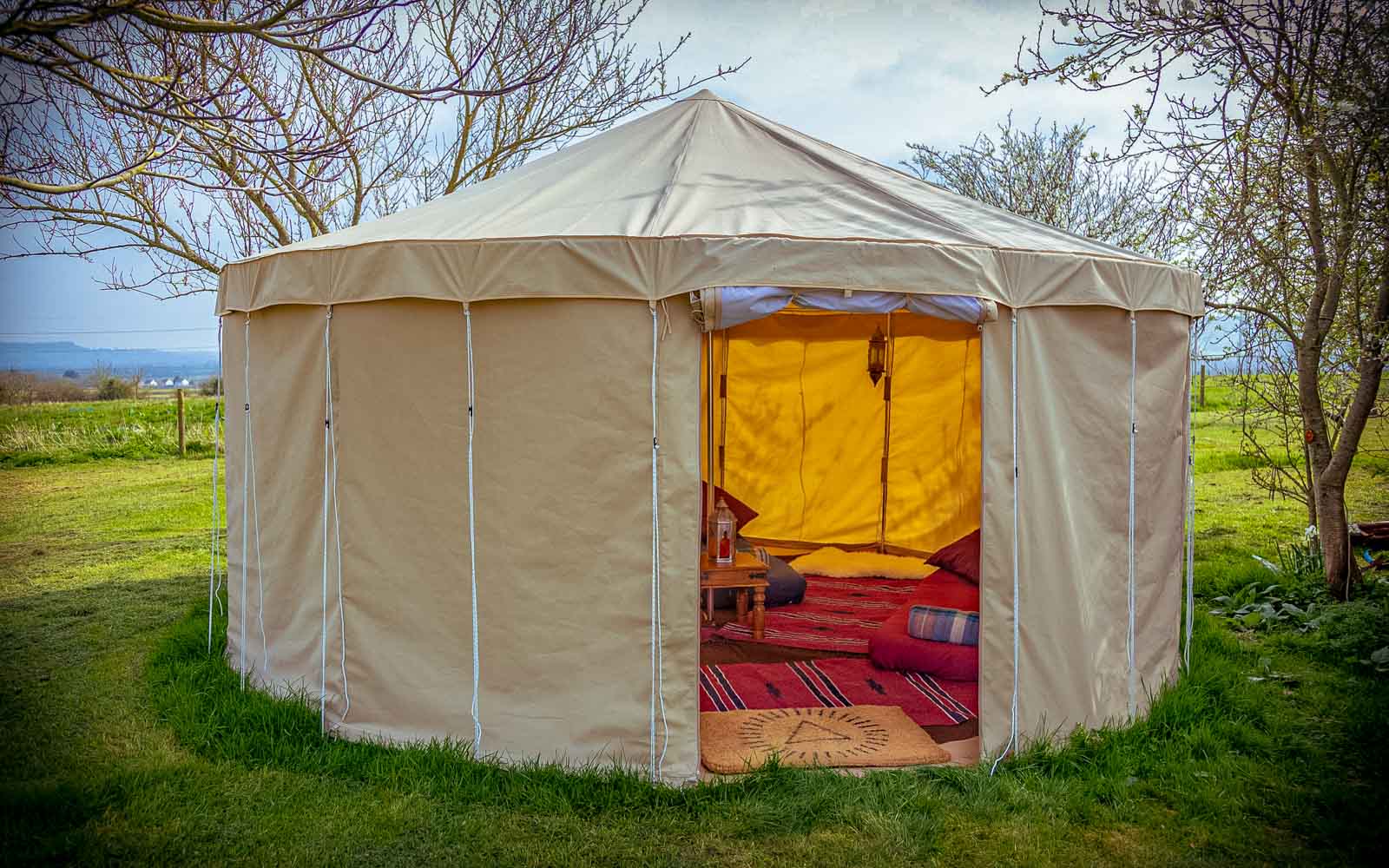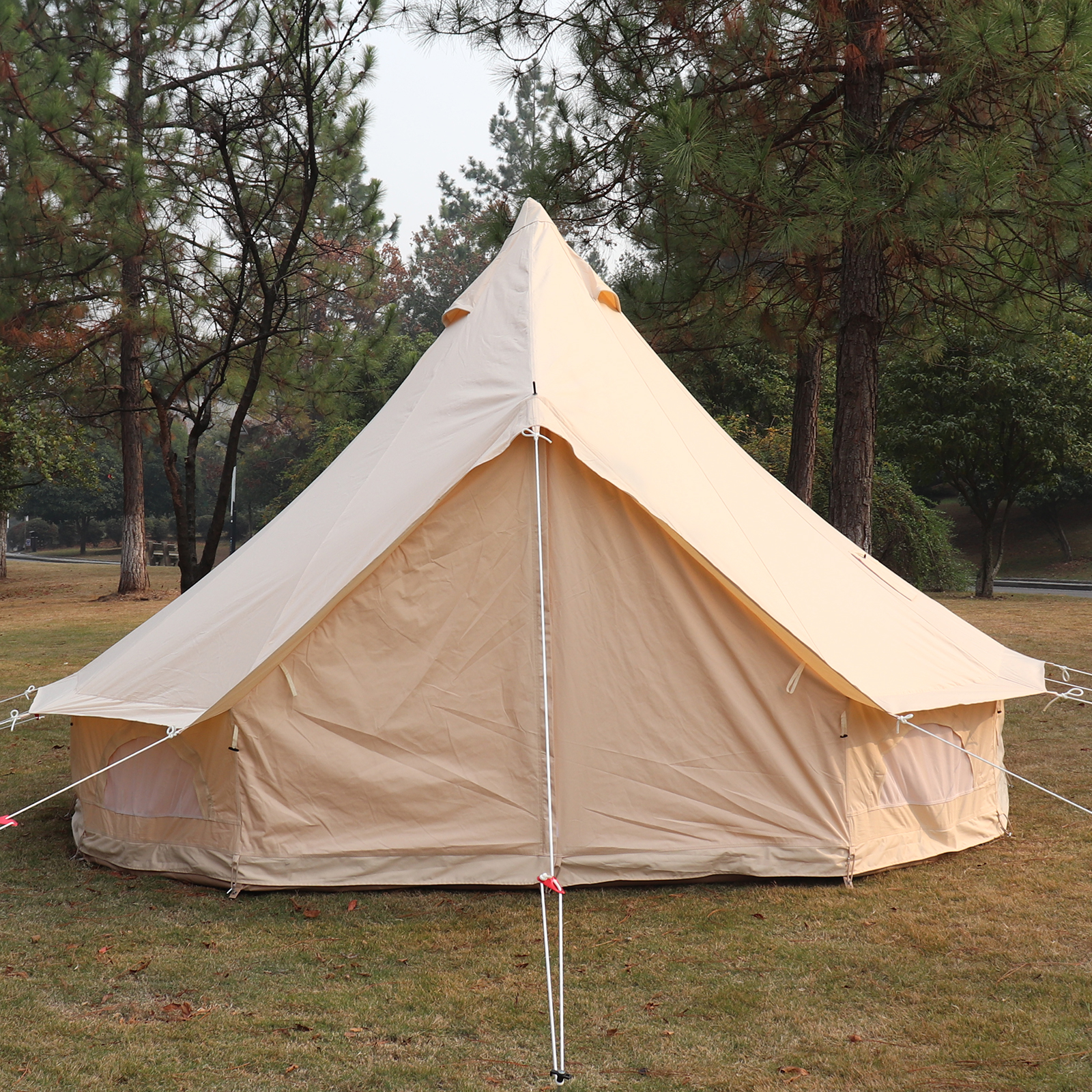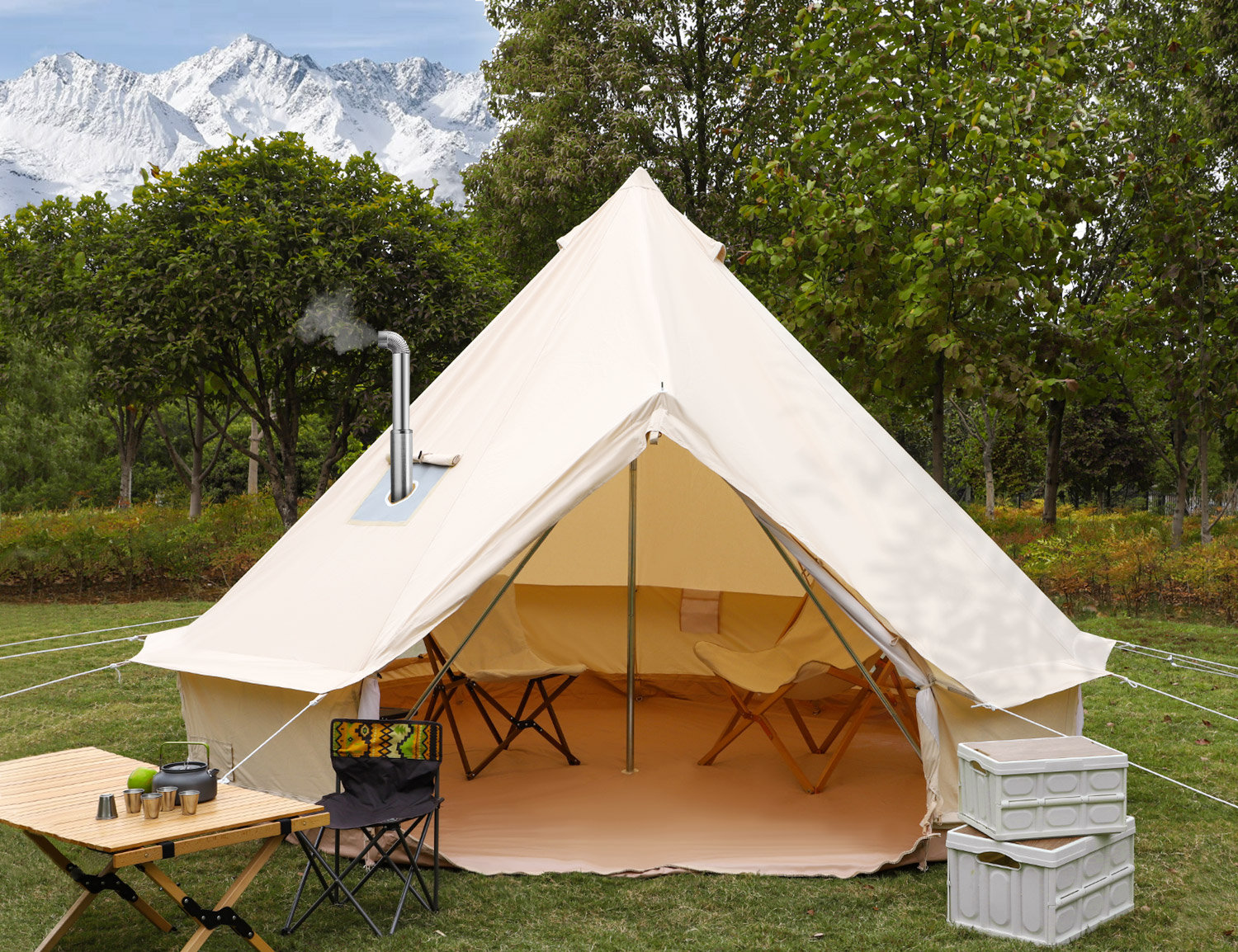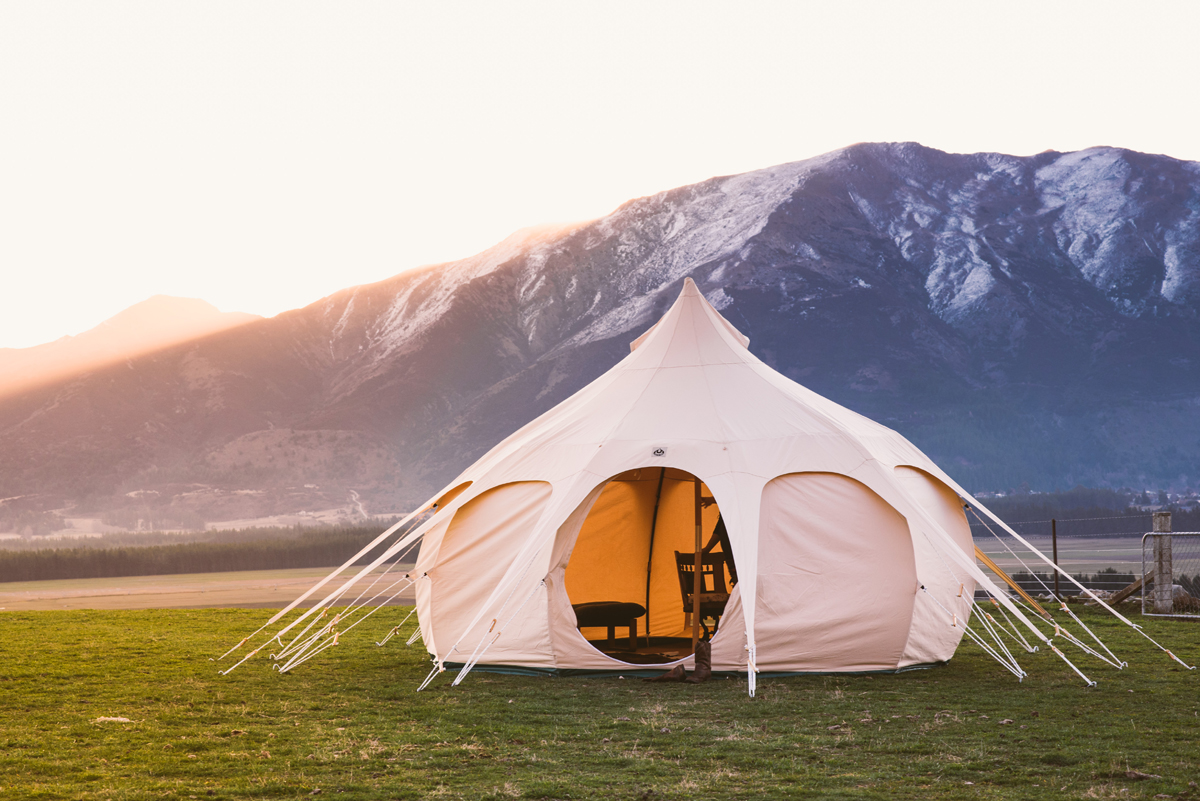Sports play an essential role in promoting physical health, mental well-being, and social interaction. Whether you prefer indoor or outdoor activities, engaging in sports provides numerous benefits and opportunities for personal growth and enjoyment.Indoor sports refer to activities that are conducted within an enclosed space, such as Walking Pad,gyms, leisure centers, or sports halls. These sports offer a controlled environment with regulated conditions, making them suitable for year-round participation. Outdoor sports, on the other hand, are played in open-air environments, such as parks, fields, or natural landscapes. These sports provide a connection to nature and offer unique challenges that can add excitement to the sporting experience. Let’s explore the advantages of outdoor sports!

I. Introduction to Yurt Tents
A. Overview of the Origins and History of Yurt Tents
Yurt tents have a rich history originating from Central Asia, where they have been used as portable dwellings by nomadic cultures for centuries. These portable structures have stood the test of time and continue to be popular for their unique design and adaptability.
B. Understanding the Unique Design and Structure of Yurt Shelters
Yurt tents have a circular design with a central frame supported by a lattice wall system. The roof structure, often referred to as the “crown,” provides stability and allows for natural ventilation. The combination of the circular shape and supportive structure makes yurts a stable and spacious shelter option.
C. Exploring the Versatility and Adaptability of Yurt Tents
Yurt tents are highly versatile and can be used in various settings and climates. They are suitable for both temporary and permanent dwellings, offering comfort and protection in different environments. Yurts can be used for camping, glamping, events, or as a unique home or vacation accommodation.
II. Components and Construction of Yurt Tents
A. Identifying the Key Components of a Yurt Tent

- Exploring the Central Circular Frame and Roof Structure
The central circular frame, often made of wood, forms the backbone of the yurt tent. It provides stability and supports the roof structure.
- Highlighting the Importance of the Supportive Walls and Insulation
The lattice wall system forms the supportive structure of the yurt tent. It consists of vertical poles connected by horizontal lattice pieces.
B. Construction Methods and Materials Used in Yurt Tents
- Understanding Traditional Construction Techniques
Traditional yurt construction involves using locally available materials such as wood for the frame, animal hides or felt for insulation, and natural fabrics for the roof coverings.
- Exploring Modern Materials and Innovations in Yurt Tent Design
Modern yurt tents may incorporate lightweight materials such as aluminum or steel for the frame and synthetic fabrics for the roof covering. These materials offer durability, portability, and improved weather resistance.
III. Size and Capacity of Yurt Tents
A. Different Yurt Tent Sizes and Configurations Available
- Exploring the Range of Diameter Options for Yurt Tents
Yurt tents come in various sizes, typically measured by their diameter. Sizes can range from small yurts suitable for solo camping to larger ones capable of accommodating multiple occupants.
- Highlighting Considerations for Choosing the Right Size for Your Needs
Consider factors such as the number of occupants, intended use, and desired interior space when selecting the appropriate size of a yurt tent.
B. Interior Space and Layout in Yurt Tents

- Identifying the Open and Spacious Design of Yurt Tents
Yurt tents provide a spacious and open interior due to their circular design. The absence of interior support poles allows for flexible space utilization and freedom of movement.
- Exploring Tips for Optimizing Interior Space and Organization
Maximize the interior space by utilizing modular furniture, storage solutions, and creative room dividers. Organizing personal belongings efficiently can help maintain a clutter-free and functional living area.
IV. Weather Resistance and Insulation in Yurt Tents
A. Traditional Insulation Methods Used in Yurts
- Exploring Natural Insulation Techniques (e.g., Felt, Animal Hides)
Traditional yurts use natural materials like felt or animal hides for insulation. Felt, made from wool, provides excellent insulation and moisture management properties, keeping the interior warm and dry.
- Highlighting the Benefits of Traditional Insulation for Weather Resistance
Natural insulation materials offer breathability, moisture-wicking capabilities, and effective insulation, making yurts comfortable and weather-resistant in various climates.
B. Modern Insulation Solutions for Yurt Tents

- Identifying Modern Insulation Materials (e.g., Reflective Foil, Foam)
Modern yurt tents may incorporate insulation materials like reflective foil or foam. These materials provide enhanced thermal insulation and can be combined with traditional insulation methods for improved weather resistance.
V. Portability and Set Up of Yurt Tents
A. Yurt Tents as Portable Nomadic Shelters
- Exploring the Dismantling and Portability of Yurt Tents
Yurt tents are designed to be portable and can be disassembled and reassembled relatively easily. The lattice wall system and collapsible frame allow for convenient transportation to different locations.
B. Step-by-Step Instructions for Setting Up a Yurt Tent
- Providing Detailed Instructions for Proper Yurt Tent Assembly
Yurt tent assembly involves erecting the lattice wall system, attaching the roof structure, and securing the fabric covering. Detailed step-by-step instructions and diagrams are typically provided with the tent.
- Exploring Tips and Techniques for Efficient Setup
Tips for efficient yurt tent setup include having an organized workspace, utilizing proper lifting and support techniques, and following the provided instructions carefully. Familiarity with the assembly process can help streamline setup and save time.
VI. Uses and Adaptability of Yurt Tents

A. Yurts as Permanent Dwellings and Seasonal Shelters
- Exploring Yurts as Permanent Residences or Vacation Homes
Yurts can be used as permanent residences or vacation homes, providing comfortable and unique living spaces. Their adaptability allows for customization and extension, making them suitable for year-round living.
- Identifying Seasonal Uses for Yurt Tents (e.g., Camping, Events)
Yurts are also popular for seasonal uses such as camping, glamping, or event spaces. Their portability and versatility make them an attractive option for temporary accommodation in various outdoor or event settings.
B. Unique Applications and Customization of Yurt Tents
- Highlighting Creative Uses of Yurt Tents (e.g., Yoga Studios, Glamping)
Yurt tents can be customized for various purposes, including yoga studios, art studios, home offices, or glamping accommodations. The circular design, spaciousness, and natural ambiance make them suitable for a range of creative applications.
- Exploring Options for Customizing Yurt Tents to Fit Specific Needs
Yurt tents can be customized with additional features such as skylights, doors, windows, or interior partitions to cater to specific needs and preferences. These modifications enhance the functionality and comfort of the yurt for different applications.
Yurt tents offer a unique and versatile shelter option with a rich history. From their traditional nomadic origins to their modern adaptations, yurt tents provide a spacious and weather-resistant accommodation solution. Their portability and ease of assembly make them suitable for different locations and uses. Embrace the charm and versatility of yurt tents for a memorable and comfortable camping or living experience.
